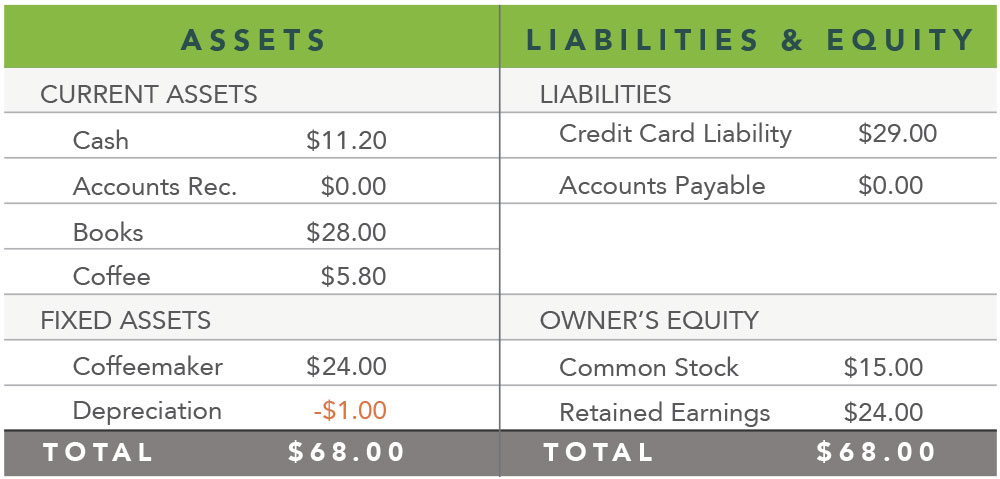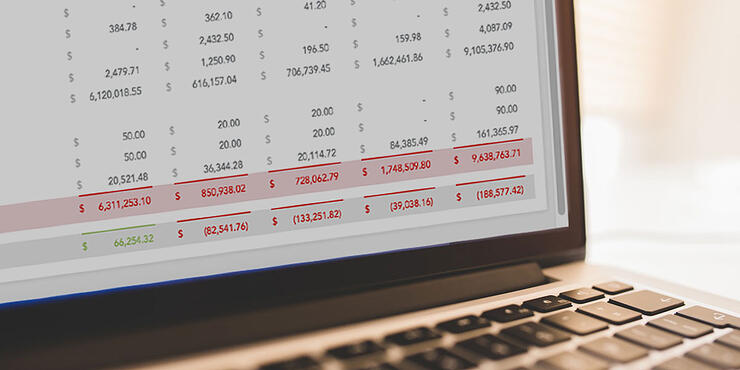You’ve put effort into managing your small business, but are you truly aware of your company’s financial pulse? Consistent financial reporting can be the difference between merely surviving and thriving in the competitive business landscape. These reports offer a window into your business’s financial health, guiding you to make well-informed decisions that could shape your company’s future. So, are you ready to take the next step towards financial clarity and prosperity?
No matter how big or small your business is, whether you do your own bookkeeping or you have an entire accounting team, there are three financial reports that all entrepreneurs must know like the back of their hands.
Table of Contents
Understanding Financial Reporting Basics
Navigating small business management can feel like a maze, especially when it comes to financial reporting. But don’t worry—we’ve got you covered. Let’s break it down in simpler terms and discuss why each major financial statement is so important.
Think of financial reporting as a way to show everyone—your team, potential investors, and even the government—how your business is doing financially. We do this through four main documents: the balance sheet, income statement, cash flow statement, and statement of shareholders’ equity.
Imagine the balance sheet as a financial selfie of your business at a specific moment. It shows everything your company owns (assets), owes (liabilities), and the value that’s left for the owners (equity) after subtracting what you owe from what you own.
Next is the income statement or the profit and loss statement. This is like a video recording of your business’s revenues, costs, and expenses over a certain period. It tells you whether you’ve earned a profit or suffered a loss during that time.
Then, we have the cash flow statement. Just like a heart monitor tracks the beat, this statement tracks the rhythm of cash flowing in and out of your business. It helps you see how your company is performing, where your money is coming from, and where it’s going.
Finally, the statement of shareholders’ equity. This is like the company’s family album, showing changes in the equity section of the balance sheet. It includes new shares issued, dividends paid out, and the money saved for future use or growth (retained earnings).
And there you have it! The essentials of financial reporting, easy and simple.
Why is Consistent Financial Reporting so Important?
Consistent financial reporting is important for several reasons:
- Transparency: Consistent financial reporting allows stakeholders, such as investors, creditors, and regulators, to have a clear and accurate view of a company’s financial performance over time. This transparency helps build trust and confidence in the company.
- Comparability: Consistent financial reporting enables stakeholders to compare a company’s financial performance with its peers, industry standards, and historical performance. This comparability is essential for making informed decisions.
- Decision–making: Accurate and consistent financial information is crucial for management, investors, creditors, and other stakeholders’ decision-making. It helps assess the company’s financial health, identify trends, and make strategic decisions.
- Compliance: Consistent financial reporting must comply with accounting standards, regulations, and laws. Non-compliance can result in penalties, fines, or legal consequences for the company.
- Accountability: Consistent financial reporting helps hold management accountable for the company’s financial performance. It provides a record of past actions and decisions, which can be used to evaluate performance and accountability.

Implementing Regular Reporting Practices
Now, let’s delve into how to implement regular reporting practices to further enhance your small business’s financial management. The core of regular reporting is consistency – not just in the data you’re collecting but also in the time and manner of its collection. You’ll want to set aside a specific time each week, month, or quarter to compile and analyze your financial data.
The type of data you collect should be relevant to your business operations. It may include income statements, balance sheets, cash flow statements, and sales reports. You don’t need to compile every piece of data available. Instead, focus on the key indicators that truly impact your business’s financial health.
Consistency in your data collection process is crucial. This means using the same methods and parameters each time you compile your reports. If you change the methodology mid-way, you’ll distort the historical comparability of your data. That’s why it’s vital to establish a set data collection method and stick to it.
To ensure accuracy, it’s important to cross-check your data. Errors can creep into even the most carefully compiled reports, so it’s essential to double-check everything. You’ll also want to keep a record of all your reports for reference and comparison purposes. This will not only help you identify trends and patterns but also spot any anomalies that may indicate an issue.
Breaking Down Your Business’s Three Go-To Financial Reports:
1. Balance Sheet
Of the Big Three Financial Statements, the balance sheet is the only one that shows the financial health of a company at a given moment. Instead of listing your business’s income and expenses like the P&L does, the balance sheet is a two-sided chart with three components (Assets on one side and Liabilities and Equity on the other):
One side lists the value of what you owe (your liabilities) and any owner equity (including your retained earnings) while the other lists the value of what you own and who owes you (assets):

The total of each of the two sides of the balance sheet should show the same amount to evaluate whether your balance sheet is properly balanced–accountants LIVE by this formula. To determine the relationship between the three amounts, accountants use a simple equation:
For corporations, the equation looks like this:
Assets = Liabilities + Shareholder’s Equity
And for sole proprietors and partnerships, it looks like this:
Assets = Liabilities + Owner’s Equity
Balance Sheet Analysis
When analyzing your balance sheet, focus on assessing your current financial position. Look at your assets, liabilities, and equity to understand how your business stands at a specific point in time. Your assets should outweigh your liabilities to indicate a healthy financial position. Assess the liquidity of your assets to ensure you can meet short-term obligations.
Examine your debt levels and compare them to your equity to gauge financial leverage. Identifying trends in your balance sheet over time can help you make informed decisions about managing cash flow, investing in growth, or reducing debt.
Regularly reviewing your balance sheet allows you to track progress, identify areas for improvement, and maintain financial stability.
2. Profit & Loss Statement
The profit & loss (P&L) statement (aka income statement) shows your revenue, costs, and expenses during any given period of time. The P&L is the best view into your bottom line, or net income, which is why it’s typically used to show business lenders and investors whether your company has made or lost money during a given period.
Your business’s net income is also what will be used to determine its taxable income each year. This is calculated by subtracting your business’s expenses from its total revenue, which you can find using your P&L.
If you are familiar with the differences between cash and accrual accounting, you can probably guess that the method you chose can really dictate the figures reported on your P&L. Because each method has its own timing for recognizing revenue (cash requires money to change hands and accrual recognizes income and expense as they are earned in real-time), the P&L for any given period will reflect different transactions or values.
Income Statement Analysis
To gain a comprehensive understanding of your business’s financial performance, shift your focus to the Income Statement Overview. This report provides a snapshot of your company’s revenues, expenses, and profits over a specific period, typically monthly, quarterly, or annually.
By analyzing the income statement, you can assess your business’s profitability and identify areas where costs may cut into your bottom line. Key components of the income statement include revenue, cost of goods sold, gross profit, operating expenses, net income, and earnings per share.
Understanding these figures can help you make informed decisions to improve your business’s financial health and achieve long-term success. Regularly reviewing your income statement is crucial for monitoring your business’s financial performance and making necessary strategic adjustments.
3. Cash Flow Statement
Your cash flow statement shows each and every one of your company’s incoming and outgoing transactions—how you’re spending your money and how you’re earning your income—over a period of time. The cash flow statement takes your business’s net income (from your P&L, remember?) and takes any non-cash transactions into account from operations, investing or financing activities to give you a picture of exactly what happened to company’s cash during that period.
So, if a company gets $1M in capital, but their P&L shows a net income loss of $50k during the same period, their cash flow statement will show a $950k net increase in cash for that period.
From there, your cash flow statement provides a more comprehensive view of how your business operates, where it’s making money, and how you make choices about expenses. For this reason, investors typically scrutinize the cash flow statement.
A cash flow statement accounts for three types of activities:
- Operations: the business functions you need to operate, including accounts receivable, accounts payable, and inventory.
- Investing: long-term changes to equipment, acquiring or selling assets, etc.
- Financing: acquiring debts, repaying loans, etc. which don’t affect your bottom line, but they do affect the amount of cash in the bank!
Cash Flow Report Importance
Understanding the significance of the Cash Flow Report is essential for small business owners to maintain financial stability and make informed decisions. This report provides a detailed breakdown of how cash flows in and out of your business over a specific period, giving you a clear picture of your liquidity and ability to meet financial obligations.
By analyzing the Cash Flow Report, you can identify trends, pinpoint potential cash shortages, and plan for necessary adjustments in advance. It helps you determine if your business is generating enough cash to cover expenses, invest in growth opportunities, and handle any unforeseen financial challenges.
Monitoring your cash flow regularly empowers you to take proactive steps to ensure the financial health and sustainability of your business.
Avoiding Common Reporting Mistakes
While leveraging technology can significantly enhance your financial reporting, it’s equally important to be mindful of common pitfalls that can compromise the accuracy and usefulness of these reports. One such mistake is incorrect data entry. One wrong figure can distort your financial reality, leading to flawed decision-making. Thus, always double-check your entries and consider automated systems to reduce human error.
Next, don’t overlook the necessity for regular report generation. If you only review your financials annually, you’re missing important insights to benefit your business. Aim to produce monthly or even weekly reports for a more accurate picture of your financial health.
Another common mistake is neglecting to reconcile your accounts. This involves cross-checking your financial records with your bank to ensure accuracy. Without regular reconciliation, discrepancies can go unnoticed, potentially leading to significant financial issues.
And finally, don’t underestimate the value of professional advice. Even with advanced software, it’s easy to misinterpret financial data. Hiring a seasoned business accountant or financial advisor can provide valuable insights and help you avoid costly mistakes.
Frequently Asked Questions
How Can I Use Financial Reports to Improve My Business Strategy?
To improve your business strategy, use financial reports to analyze trends, track expenses, identify profitable areas, and make informed decisions.
Are There Any Specific Ratios That Can Help Me Analyze My Financial Health?
To analyze your financial health, specific ratios such as:
- Current ratio
- Quick ratio
- Debt-to-equity ratio
are crucial. These metrics offer insights on liquidity, solvency, and financial leverage, aiding in making informed decisions for your business strategy.
What Are Some Common Mistakes to Avoid When Interpreting Financial Reports?
When interpreting financial reports, it is important to avoid overlooking details, misinterpreting data, neglecting to compare with industry standards, and relying solely on one report.
Stay vigilant, track trends, and seek professional advice to ensure accuracy.
How Often Should I Review and Update My Financial Reports?
You should review and update your financial reports regularly to stay on top of your business’s financial health.
It’s recommended to check them monthly to make informed decisions and track your progress effectively.
How Often Should a Small Business Review and Update Its Financial Reporting Practices?
You should review and update your financial reporting practices at least quarterly. It’s crucial to keep your financial records accurate and current. This lets you track your business’s progress, make informed decisions, and prepare for tax time. However, depending on your business needs or if you’re facing any financial challenges, you may want to do this more frequently. Ultimately, consistent reviews ensure healthier financial management.
Can Financial Reports Help Me Identify Potential Fraud or Discrepancies in My Business?
Financial reports are crucial in detecting fraud and discrepancies within a business. Regularly reviewing these reports allows you to identify irregularities, track financial patterns, and take prompt action to protect your business.
How to Train Staff in Maintaining Financial Reporting Consistency?
To train your staff in maintaining financial reporting consistency, first establish clear procedures and standards. Then, conduct regular training sessions covering these standards. Use real-world examples in your training for better understanding. It’s also crucial to implement a reliable financial software system. This will help enforce consistency. Lastly, always encourage open communication. If someone’s unsure about a procedure, they should feel comfortable asking for help.
Are There Industry-Specific Financial Reporting Requirements for Small Businesses?
Yes, there are industry-specific financial reporting requirements for small businesses. You must be aware of these, as they can greatly impact your business operations. These requirements vary widely based on your industry. For instance, construction companies may have different reporting requirements than retail businesses. Therefore, you’ll need to research and understand what regulations apply specifically to your industry to ensure you’re in compliance.
What Are the Potential Consequences for Inconsistent Financial Reporting?
Inconsistent financial reporting can lead to serious issues. You might face penalties from regulatory bodies, lose credibility with stakeholders, or miss out on investment opportunities. It’s also harder to make informed decisions when your data isn’t accurate or complete. Additionally, inconsistencies could signal fraud, leading to legal complications. So, it’s crucial to maintain consistent, accurate financial reporting.
Conclusion
Understanding and implementing consistent financial reporting is crucial for the growth and success of your small business. It provides a clear picture of your business’s financial health, guides decision-making, and ensures compliance with laws and regulations.
By understanding the basics of financial reports like the balance sheet, income statement, and cash flow statement, you can make informed decisions that drive your business forward. Avoid common reporting mistakes and seek professional advice when necessary. Regular reviews of these reports can help detect any discrepancies or potential fraud, ensuring the financial stability and integrity of your business.
Stay proactive in managing your finances to set your business up for long-term success. And if you need to call on a team of experts, we’ve got your back.




